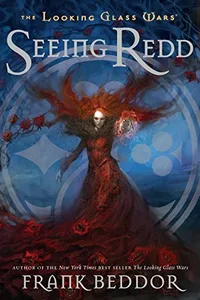Step into the wild, war-torn world of The Looking Glass Wars, where Wonderland isn’t just a whimsical dreamscape but a gritty, imagination-fueled queendom teetering on the edge of chaos! Penned by Frank Beddor, this New York Times bestselling series flips Lewis Carroll’s Alice in Wonderland on its head, claiming Carroll’s tale was a watered-down version of the real story. Meet Alyss Heart, a fierce princess destined to reclaim her throne from her murderous aunt Redd in a saga bursting with dark fantasy, epic battles, and a card-based hierarchy that’s anything but playful.
Unlike Carroll’s tea parties and riddles, Beddor’s Wonderland is a vivid, high-stakes universe where imagination is power, and betrayal lurks around every corner. Perfect for fans of reimagined classics and dark fantasy, this trilogy (plus a comic spin-off) offers a thrilling ride that’s equal parts heart-pounding and heart-wrenching. Ready to uncover the truth behind Wonderland? Let’s dive in!
How The Looking Glass Wars Began
Frank Beddor, a former freestyle skiing champion turned storyteller, didn’t stumble down a rabbit hole to create this series—he was inspired by a deck of peculiar playing cards at the British Museum. These cards, glowing with Wonderland-esque imagery, sparked Beddor’s imagination, leading him to re-envision Alice’s tale as a dark, epic truth. Published in 2004, the first book, The Looking Glass Wars, set the stage for a trilogy that blends historical nods, like Victorian England, with a fantastical queendom. Beddor collaborated with artist Doug Chiang to bring his vivid world to life, ensuring every detail, from Wondertropolis to the Pool of Tears, felt real and immersive.
The Heart of The Looking Glass Wars
The trilogy kicks off with The Looking Glass Wars (2004), where young Alyss Heart flees a bloody coup led by her aunt Redd, who slays Alyss’s parents to seize the throne. Escaping through the Pool of Tears, Alyss lands in Victorian London, adopted by the Liddell family, only to see her true story twisted by Charles Dodgson (aka Lewis Carroll) into a silly children’s tale. Seeing Redd (2007) sees Alyss back in Wonderland, rebuilding her queendom while facing Redd’s vengeful return and new threats from scheming rivals. ArchEnemy (2009) wraps the saga as Alyss battles a depleted Heart Crystal, the source of imagination, and an unlikely alliance with Redd against a greater foe.
The series thrives on themes of imagination as power, resilience, and the clash between good (White Imagination) and evil (Black Imagination). Beddor’s Wonderland is a dystopian wonderland with a card-based hierarchy—Hearts rule, while Spades, Clubs, and Diamonds vie for power. Characters like Hatter Madigan, a blade-wielding bodyguard, and The Cat, a shape-shifting assassin, add grit and depth, while the fast-paced, cinematic style reads like a blockbuster film. The spin-off comic Hatter M expands Hatter’s quest, diving deeper into this vivid universe.
Why The Looking Glass Wars Resonates
The Looking Glass Wars carved a niche in young adult fantasy by boldly reimagining a beloved classic, appealing to readers who crave darker, more grounded takes on familiar tales. Its blend of historical and fantastical elements, paired with strong female leads like Alyss and Redd, resonates with fans of Gregory Maguire’s Wicked or Tim Burton’s Alice adaptations. The series’ cult following praises its creativity, with fans on platforms like Reddit naming pets after Alyss and clamoring for a movie. By championing imagination as a tangible force, Beddor’s work inspires readers to see creativity as a weapon for change, cementing its lasting appeal.
- First Published: 2004 (The Looking Glass Wars)
- Books in Trilogy: 3 (The Looking Glass Wars, Seeing Redd, ArchEnemy)
- Spin-Off: Hatter M comic series (2005–present)
- Genre: Young Adult Dark Fantasy
Grab The Looking Glass Wars and plunge into a Wonderland where imagination reigns and every page pulses with adventure!




